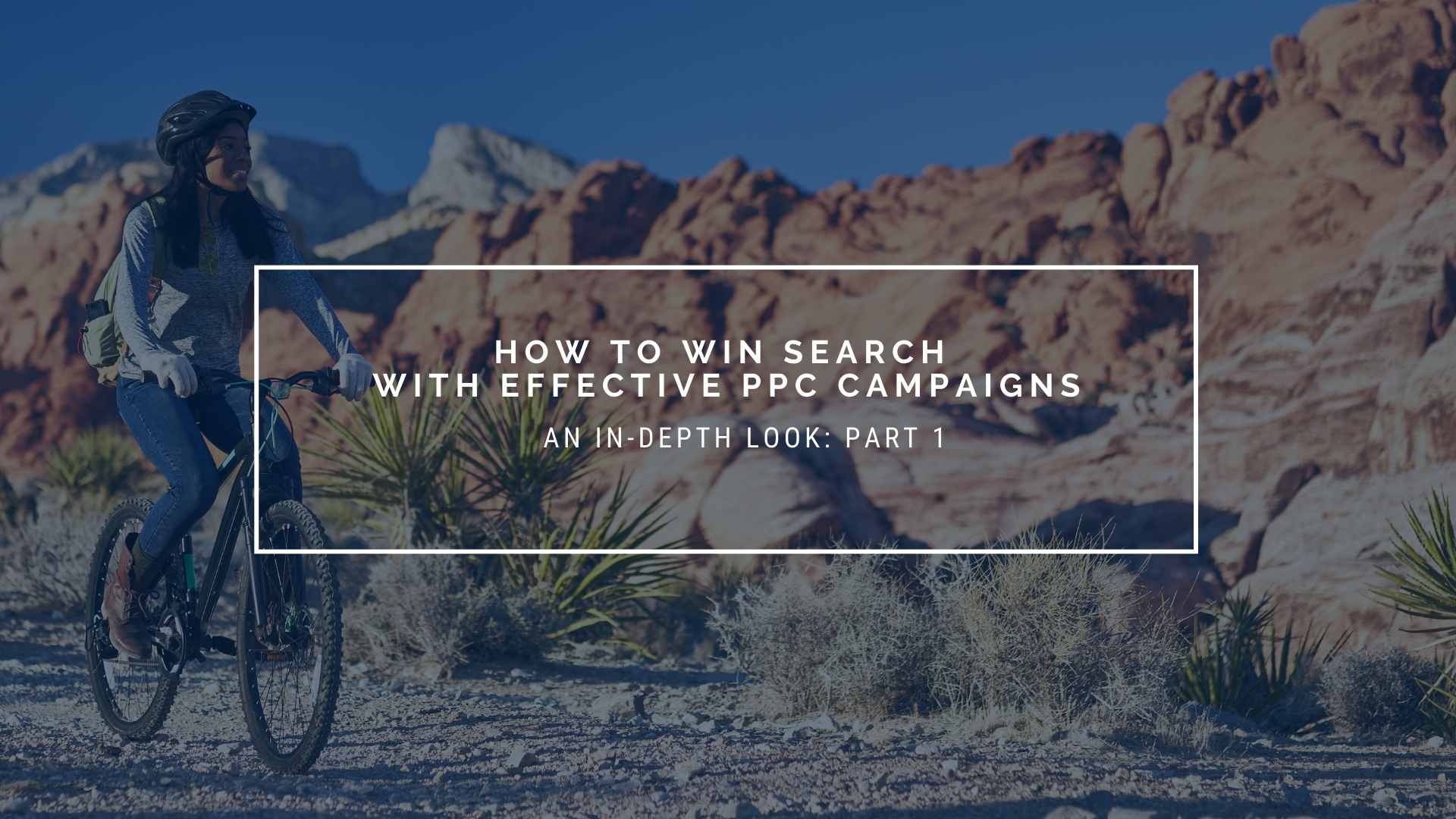How to Win Search with Effective PPC Campaigns – Part 1
PPC (Pay Per Click) marketing, also known as search engine marketing (SEM), is an especially important tool in the toolbox of every marketer. SEM uses PPC ads, such as Google Ads (formerly called AdWords) or Bing ads to achieve paid top of page positions in search results. Done well, PPC ad campaigns can help your company attract new high quality leads for your products or services, with immediate results. Organic results are always placed below the first 1 to 4 paid ads, and ads typically win the first clicks. Users are now so used to ads, and they tend to click the first results that answer what they are looking for. If there are additional advertisers, ads 5-8 can fall at the bottom of the organic search results on each page.
Our clients rely on PPC to win top of page positions in search results for one, or both, of these two primary reasons:
- To win immediate top of page placement in search results for keywords that don’t currently rank high organically, to increase visibility and lead traffic.
- To win top of page placement in search results for proven revenue-producing keywords that already rank high organically, but are in very competitive environments with ads bidding for those same keywords. Their goal is to generate direct or assisted sales by winning the most clicks of high quality lead traffic.
The most effective PPC campaigns can win the ad slot position that you want, while carefully targeting the highest quality leads and paying the least amount for each click. How to do this? Read on for our best tips!
This first article on effective PPC focuses on three key foundational elements: ad placement strategy, the importance of the right goals and conversions, and how geographic targeting can make or break your ad budget.
1. Ads Placement in Search Results: Paying for #1 Position is Not Always the Best Strategy
Below are typical Search Engine Results Page results, (SERP) for both a desktop and a mobile device. For Organic results no one will necessarily see the same results on any given search, because Google gives results based not only on the query, but also where the user is and what they know about your. PPC results will show depending on where the user is and how the Advertisers are targeting and bidding for given query targeting.
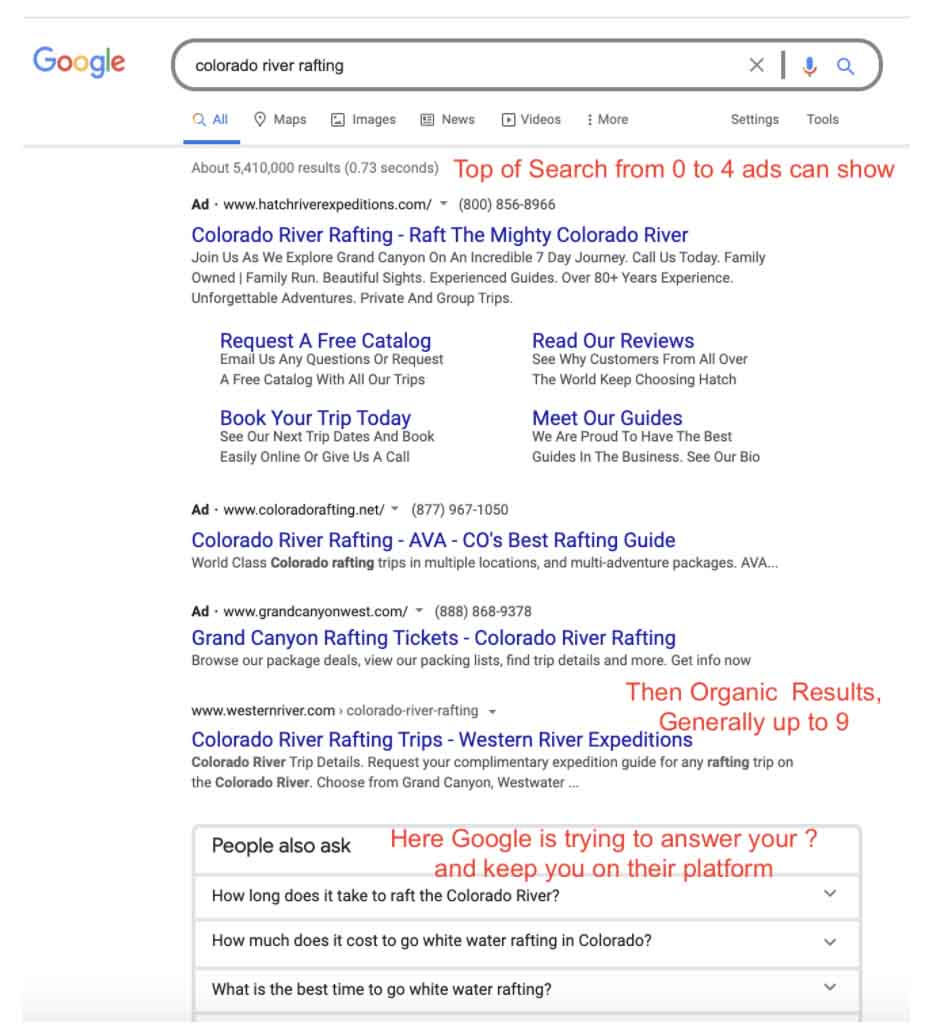
A typical bottom of a Search Results page:
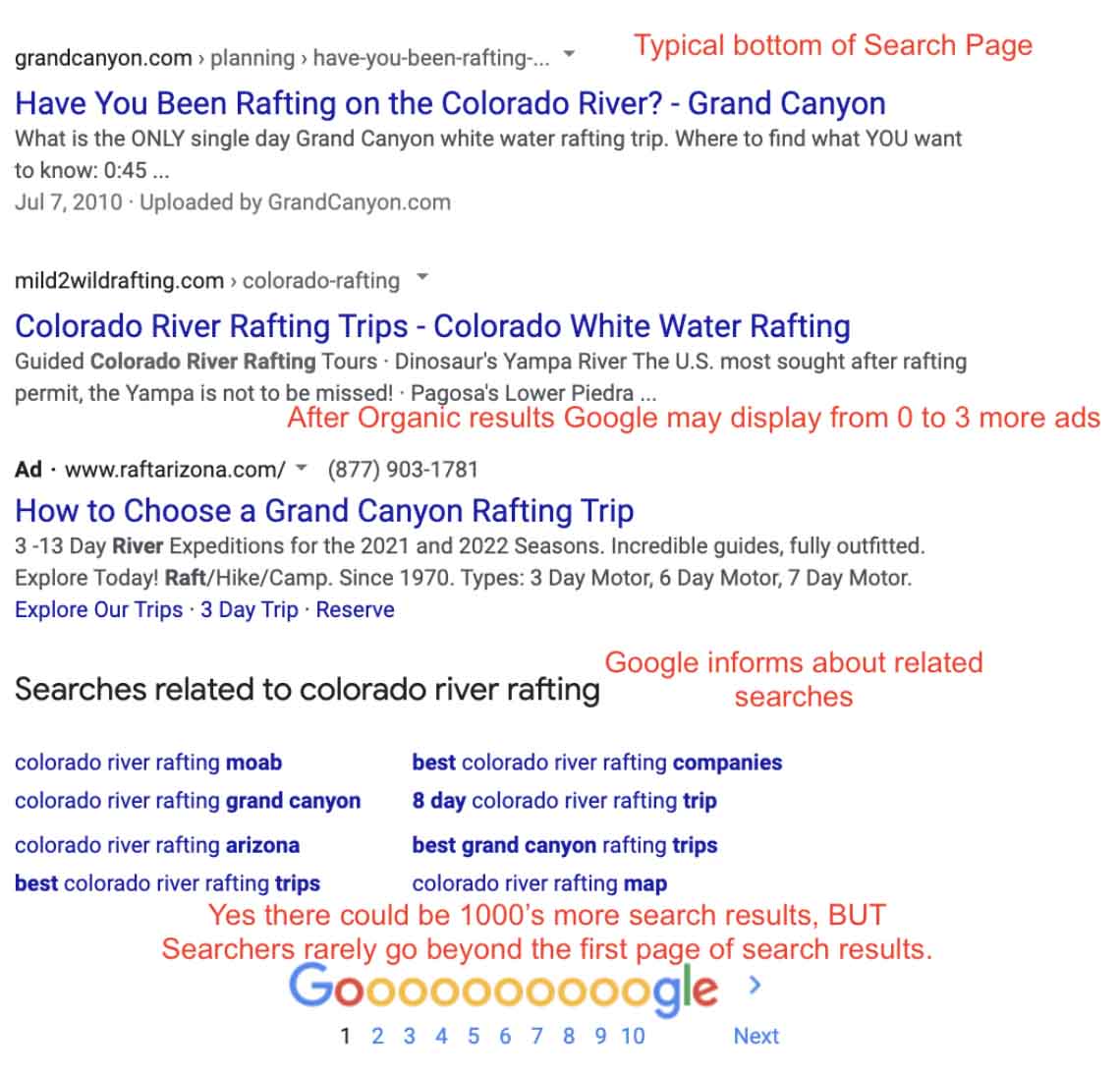
2. Understand Google’s Goals 1st, in Order to Meet Your Goals
To be effective with search marketing, whether it’s organic or paid PPC, it helps to really understand Google’s Goals. At a high level, Google wants to give the best answer to the intent of the typed or spoken search query. However, because Google makes most of their money on advertising, they also want to maximize their ad revenue and keep searchers on their Google platform as long as possible. As a result, Google is balancing the desires of searches, the captive audience of their advertisers who what results for their business, (it’s Google Sandbox and if you want to play you probably have to pay), and the demands to keep their revenues growing. The real estate on Search Engine Results Pages has increasingly been given over to Advertising as we all can see, simply by doing almost any search. So keep this in mind when thinking about who benefits from what.
If you don’t target effectively and restrict to whom and where your ad shows, there is a huge potential for wasted spend. For example, Google’s definition of what is “local” is loose and depends upon a range of factors including the industry you are in, where the ad is showing, how dense the population is, the density of competitors, and from how far away customers typically travel for your industry. Think about a pizza parlor, vs a local plumber vs rafting company, they all have very different profiles of what might be considered local. Local searches for pizza tend to be very local within a city. Searches for a plumber can be countywide in many areas. Meanwhile, rafting searches might deliver results from hundreds of miles away if there are no local best answers to that search. To implement the most effective PPC strategy, you have to understand your market, your service area and the buying process of your customers.
3. Goals and Conversions: The “Secret Sauce to Optimized Results”
Do you know what result you want your ad campaigns to deliver? As part of your ad campaigns setup, whenever possible configure the conversion actions you want to measure. Note that you can have different conversions for different campaigns. For many businesses, it will be ecommerce sales. For businesses with longer buying cycles, it could be getting people into your sales funnel to download a guide, signup for an email information series, or watch a series of videos. The important thing is to identify and implement conversion actions that are relevant to your target audience and represent what you want to measure. We like to implement conversion actions within Google Analytics, so that they can be used with any marketing campaign, as well as imported into AdWords for PPC. This allows us to readily compare the effectiveness of different channels by conversion results. Return on ad spend (ROAS) is one of our favorite metrics where we can close the loop on sales through direct ecommerce reporting. Benchmarks of effective campaigns are a direct ROAS of 3X and a direct plus assisted ROAS of 5X or more. Of course, anything over 1X ROAS means that for every $1 spend on an ad, your business got $1 in sales. You will want to determine what your breakeven ROAS metric is for your business/
We emphasize to our clients how critical it is to be to identify, configure and measure relevant goals for individual campaigns. This is how we can see if the PPC campaigns are driving the results that are important to each client. Then, when we see campaigns outperforming others, we can divert budget to those campaigns to deliver even higher ROAS.
4. Location, Location, Location!! Effective Geographic Targeting is Essential
This is not just the bible of retail stores, it’s true for any targeted digital campaign. Where are the customers that you want to target? Where do they live, where are they going, and where are they when they are looking for your services?
- Understand (the Location of) Your Geographic Target. Fine-tuning your geographic targets by campaign or adgroup will be one of the most important ways to trim wasted spend from your PPC program. For example, with local products, people are searching for answers in their immediate local area. However, with vacation products, people often are searching for lodging and activities in the location they will be traveling to in the future. They are based somewhere else during their planning and purchase process. In setting up your Geo Targeting, Google has options that lets you limit the geographic location, (radius, zip code, county, city, state, etc.). Importantly, Google also has options to say where users might be in relation to the areas you are targeting or restricting. Google allows you to target & exclude people in several ways:
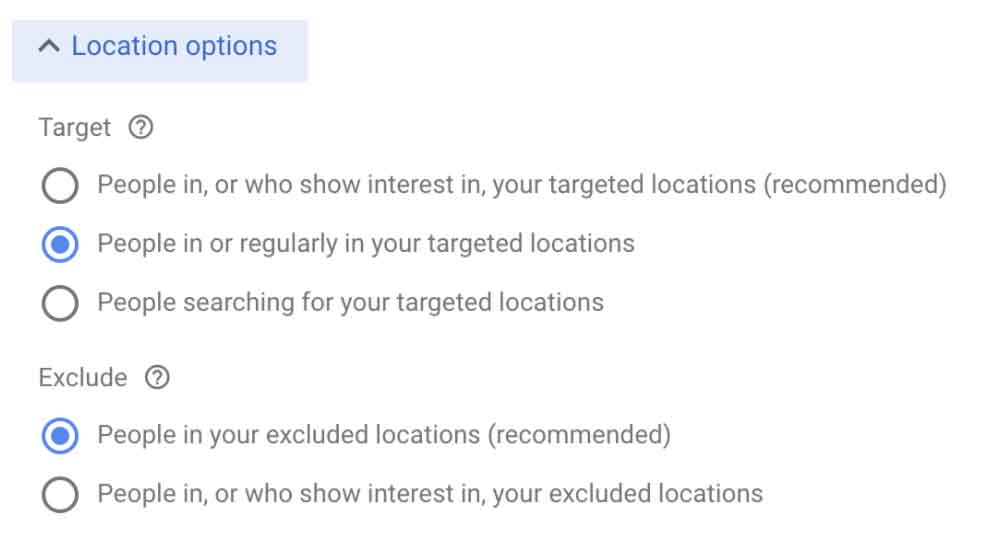
- Target “people who are in, or who show interest in, your targeted locations”. Be careful as people from anywhere in the world can show interest in anything). Review your “User Location Report” to see where your users are coming from. If you see locations you don’t expect to see, then you need to tighten your targeting. Take a moment to exclude those locations that should not see your ads.
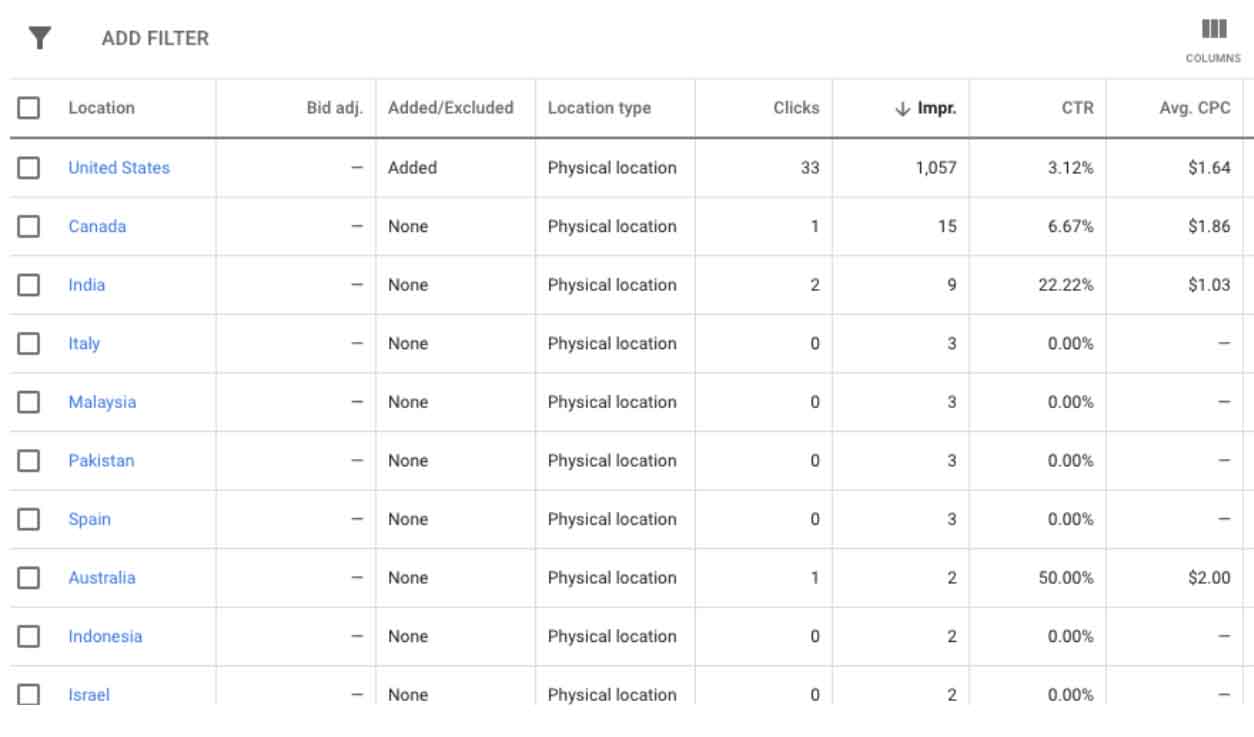
- You can instead opt for “People in or regularly in your targeted locations”, which Google tracks via their current location on their mobile device OR IP address on their desktop.
- A third option is selecting “People searching for your targeted locations”, which shows your ad to people outside of your region who are looking for you. An example would be someone in Texas looking for a Baja California vacation. This option is best for you if you know that people in your area of operation are not your customers, which is rare. It is also useful if you are creating different campaigns for each customer location type, and do not want any crossover. For example, Campaign 1 might target people in your area, and campaign 2 might target people not in your area, but who are searching for you. This lets you clearly measure the results of each of these two categories of prospects.
5. Location Exclusions
Using location exclusions to make sure you are not unintentionally targeting your ads to people outside of your target geographic location is an important tactic to makes your ad budget much more efficient. With very local ads, it’s easy to limit your targeting to “people in” your location, and exclude everyone else. When your target audience is farther out, target your desired geo radius and then exclude all locations outside of this. For example, if you want to target Coloradans on the front range, but not west of the continental divide, you can specifically include and exclude those desired regions, respectively. For the USA, you can exclude or target down to states, counties, Nielsen DMA regions, Congressional districts and even down to zip codes if you want.
Using Location Exclusions:
The example below excludes specific countries, states and portions of states (in red) on the map below. The campaign goal is to target the local Geography within driving distance to Frederick, Maryland for an activity there.
- The concentric blue circle represents areas we are specifically targeting and/or where we might want to do bid adjustments, for various reasons.
- The white areas represent areas where we want ads to trigger and are not excluding, but we’re not doing bid adjustments with them.
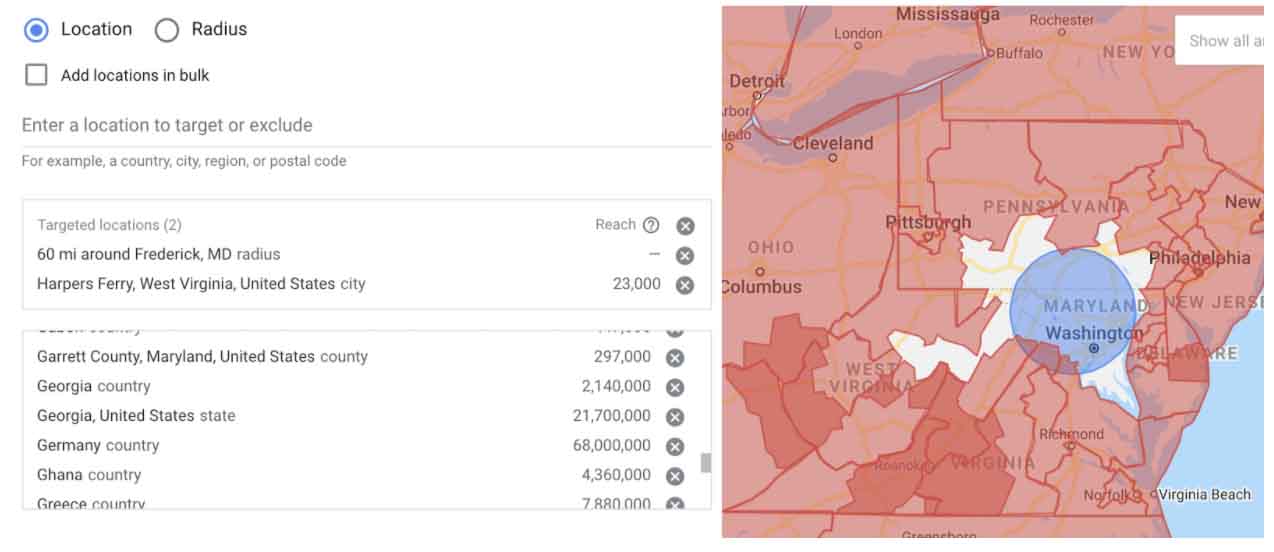
PRO TIP:
If your geographic target is quite wide, but your product is niche to specific audiences, use your ad copy to help pre-qualify people by clearly describing your product or service and stating your location. That will help users self-select about whether to click through on your ad or not, saving you potential wasted clicks.
Often it makes sense to have multiple campaigns for the same marketing efforts. You may use wide geography targeting for queries like “ziplines in Asheville” as well as a tight geographic target for searches like “ziplines near me.” You have to understand your business and customers to determine if this segmentation is necessary and then monitor conversions to see what is working for your business.
For a wide-geo campaign, you might target people anywhere in your wider region that may come to the target area, such as someone anywhere in North Carolina searching for “Asheville ziplines.”

But for generic queries, like “ziplining near me”, you wouldn’t want to be that broad. Instead you would have the generic queries limited to a tight geographic area around your venue to limit the targeting to people closer to you.

In Conclusion
Winning search with effective PPC is about funneling high quality leads into conversions, not just attracting a bunch of random clicks. Configure the right goals & conversions, map the right geo locations, and test several ad placement slots.
Overall getting high quality leads and converting traffic should be the goal, not just a lot of general traffic. That’s why you target carefully, use the right keywords, and add negative keywords so that you don’t waste money on the wrong clicks. PPC can be an extremely effective tool for small and medium businesses to get to the top of search results and attract new customers for significant growth. However, as with all things marketing, if you do not have clear conversion actions or goals that you are measuring, it will be almost impossible to get the most effective campaigns for the least cost. Success happens when you set up your campaign properly with the right geographic targeting, write effective ad copy with lots of variations to test, use all the features of extensions, and close the loop with high performance, actionable Landing Pages. Poorly set up Google Ad programs that are not well-optimized only enrich Google’s coffers, and not running Google Ads at all means you are sitting on the sidelines while your competitors grow their business. You have to be willing to dig in to learn the intricacies of the PPC world, and keep up on the consistent changes Google rolls out. Or, you can get a highly competent agency to handle PPC for you while you run your business.
Check out the next PPC blog article in our series: How to Win Search With Effective PPC Campaigns – Part 2. We will be covering Keywords, Match Types, Quality Score, and Search Ad Types.
Want more details on how to win local search for your business? See our guest post on Search Engine News: 11 Tips to Bring a Flood of New Clients to Your Local Business Using Targeted PPC Campaigns

